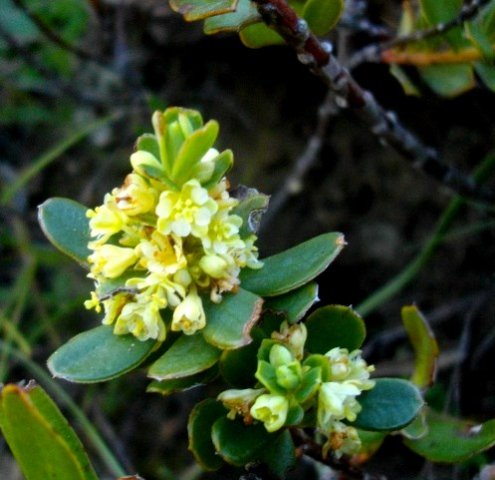Clutia

Clutia is a genus of shrubs, subshrubs and occasionally small trees in the Euphorbiaceae family. A watery, (not milky) latex is exuded by plant parts.
The simple, alternate leaves are sessile or nearly so. In some species the leaves are ericoid. Single veins grow from the leaf-base, the blades sometimes bearing translucent gland dots. Where stipules are present, they are small.
Most species are dioecious, the inflorescences growing from leaf axils. Male flowers grow in many-flowered inflorescences, the female flowers solitary or in few-flowered fascicles. Pedicels vary in length, the female ones are articulated, often longer than male ones.
The male flower has five imbricate sepals joined only at the base, the five petals about as long as the sepals. Petals are either clawed or sessile, often with glands present. There is a disc comprising glands at the sepal bases. The five stamens have their filaments joined in a tube. A rudimentary pistil is present.
The female flower has five sepals and petals similar to the male flower but no stamens. There is a disc in one series and a globose, superior ovary that is warted or hairy, comprising three locules, each bearing only one ovule. The three styles are free or joined low down and divided or lobed at the top, the stigmas thick or laminated.
The fruit is usually a woody, nearly globose capsule. The three valves dehisce independently. The ovoid seeds are black and shiny with fleshy attachments.
There are about 72 species of which about 70 in Africa, the other two in Arabia. About 35 grow in southern Africa. Some of the plants are browsed although not much. The plants are commonly known in Afrikaans as bliksembosse (lightning bushes).
The plant in picture is Clutia alaternoides (Leistner, (Ed.), 2000; Vlok and Schutte-Vlok, 2015; Coates Palgrave, 2002).

